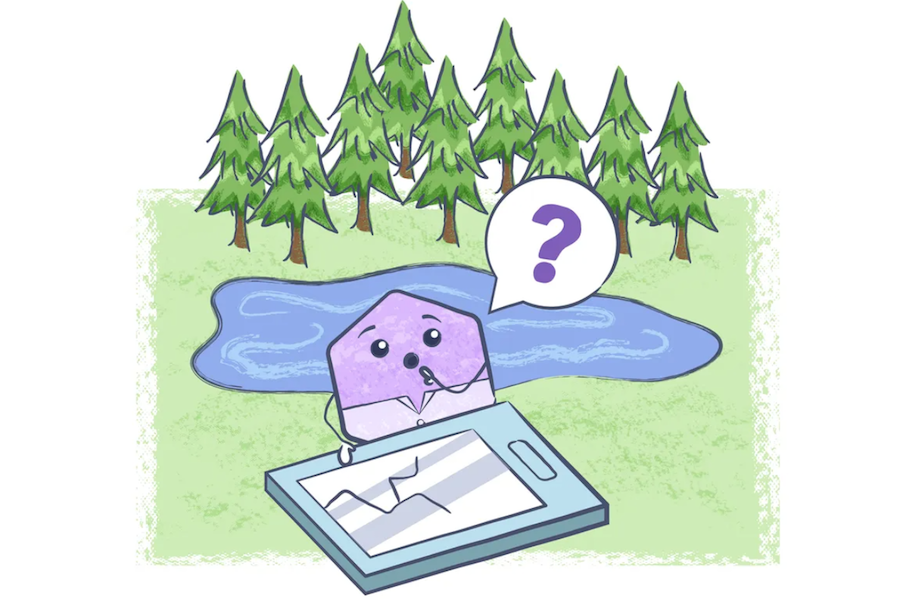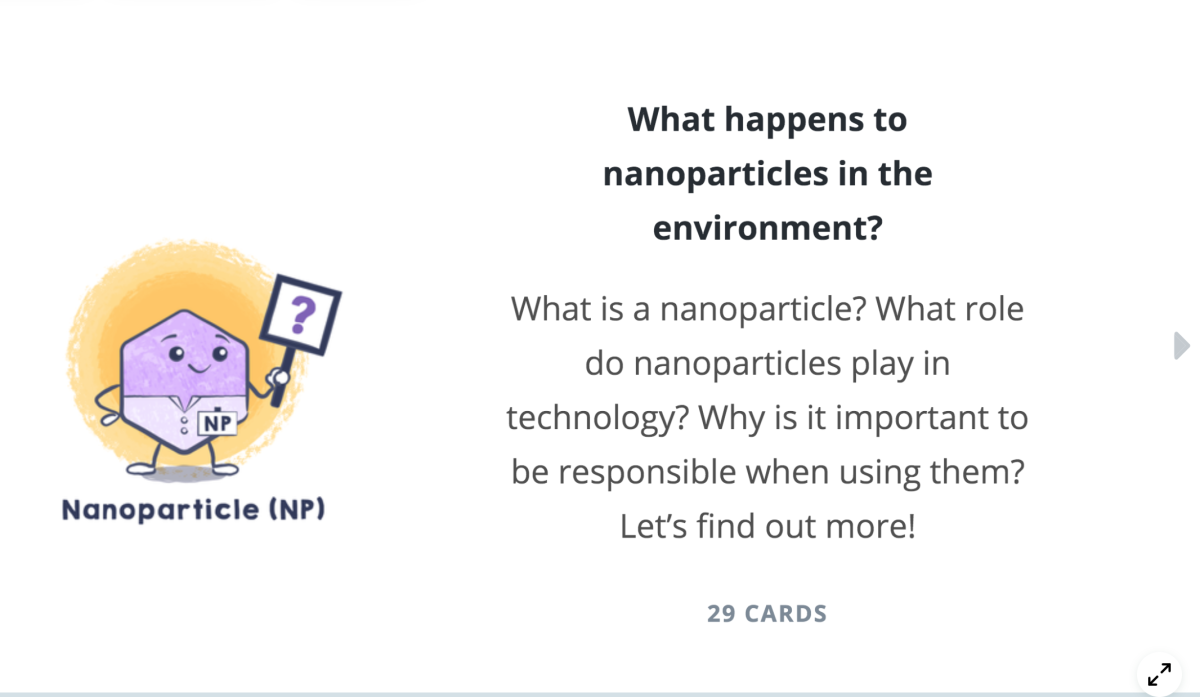How to use nanotechnology responsibly

Artist credit: Elfy Chiang
Grad students teach the environmental impact of nanotechnology
March 1, 2021
Nanotechnology has paved the way for myriad advancements in fields like cosmetics and electronics in the past two decades. For example, many smartphones today contain batteries made up of nanoparticles, which are materials that are only 1,000th the size of a human hair. But what happens to these tiny particles when phones and other devices end up in the trash?
A team of graduate students from the National Science Foundation (NSF) Center for Sustainable Nanotechnology have created a course with the online science communication company Lifeology to explain just that. Just 29 “flash cards” or slides long, the students call the course a “snackable” way to communicate both the benefits of nanotechnology and its potential environmental impacts to non-scientists.
University of Minnesota Ph.D. student Stephanie Mitchell, along with University of Wisconsin-Madison grad students Jaya Borgatta and Paige Kinsley, worked closely with Lifeology co-founder Paige Jarreau and artist Elfy Chiang on the project.
“There are a number of reasons why understanding nanotechnology is important right now,” said Mitchell, who studies chemistry in the College of Science and Engineering and received fellowship support from the Department of Chemistry Special Projects Fund. “It’s in a lot of products that people use and don't really consider. And because the voting public has such a crucial voice, people need to understand the good [nanotechnology] is doing for them and the responsibility they have for using these products.”

Nanoparticles: An unexpected journey
The average American replaces his or her cellphone every 18 months. According to electronics recycler Tech Dump, this results in more than 100 million phones being discarded each year. Most of these electronics aren’t recycled properly, meaning that the nanoparticles inside them could end up polluting the environment.
The students’ Lifeology course explains this process by following the odyssey of a lithium cobalt oxide nanoparticle named Lee, who helps power a phone battery. When the broken phone ends up in a lake, Lee finds its way into the gills of a fish and starts to shed its heavy metal ions, ultimately poisoning the fish.
But, the researchers don’t want people to be afraid of nanotechnology—only to understand how to use it properly.
“We don't want to have another GMO scare where people don't understand the process that improves and strengthens food production,” Mitchell explained.
“But, we also don't want to have another asbestos or DDT problem where we start using all of this new technology and new science without fully understanding any lasting repercussions,” she said.
Mitchell said the cartoon nature of the flashcards are essential to conveying that message, which the students wanted to be understandable for a wide range of people, from 13-year-olds to adults.
“I think that's where the course really beautifully hugs the line of being both scientific and engaging people in what nanotechnology is, while also recruiting people who maybe don't think that they could understand the benefits or impact of nanotechnology,” she said. “The visuals alone are super helpful for solidifying concepts, because of course pictures are worth 1,000 words.”
Learning effective science communication
Mitchell works in the lab of CSE chemistry professor Erin Carlson, who led a 2019 study that found that nanoparticles may have a bigger effect on the environment than previously thought. Her lab is part of the Center for Sustainable Nanotechnology, and Mitchell participates in many outreach efforts, from Eureka! summer camps for girls in STEM to online science fairs to engage the public.
Mitchell said working on the Lifeology course has helped her become a better science communicator in learning how to edit down complex scientific ideas to create clear, concise messages.
“I hope other graduate students can have the opportunity to work on some kind of science communication effort,” she said. “Ph.D. programs are producing scientists who are going to be in important positions down the road in their next jobs, and part of those jobs are going to be communicating with other scientists or non-scientists.”
“Being able to grow in your science communication skills during graduate school, I think, is really important,” Mitchell said.
Mitchell, Borgatta, and Kinsley enjoyed the project so much that they’re collaborating with Lifeology again on a second course—this time focused on how scientists work with local farmers to improve agriculture.
“The goal of this next course partly about the helpful role of nanotechnology in producing safe and healthy food,” Mitchell said, “as well as addressing more of the relationship between scientists and farmers, and how good science does work for the public and has a benefit for everyday lives.”
Learn more about her CSE experiences in this Department of Chemistry story and video.
Click through the students’ Lifeology course, “What happens to nanoparticles in the environment?”
Click through the students' second Lifeology course, "How do nanoparticles improve agricultural sustainability?"
Story by Olivia Hultgren
If you’d like to support students at the University of Minnesota College of Science and Engineering, visit our CSE giving page.
